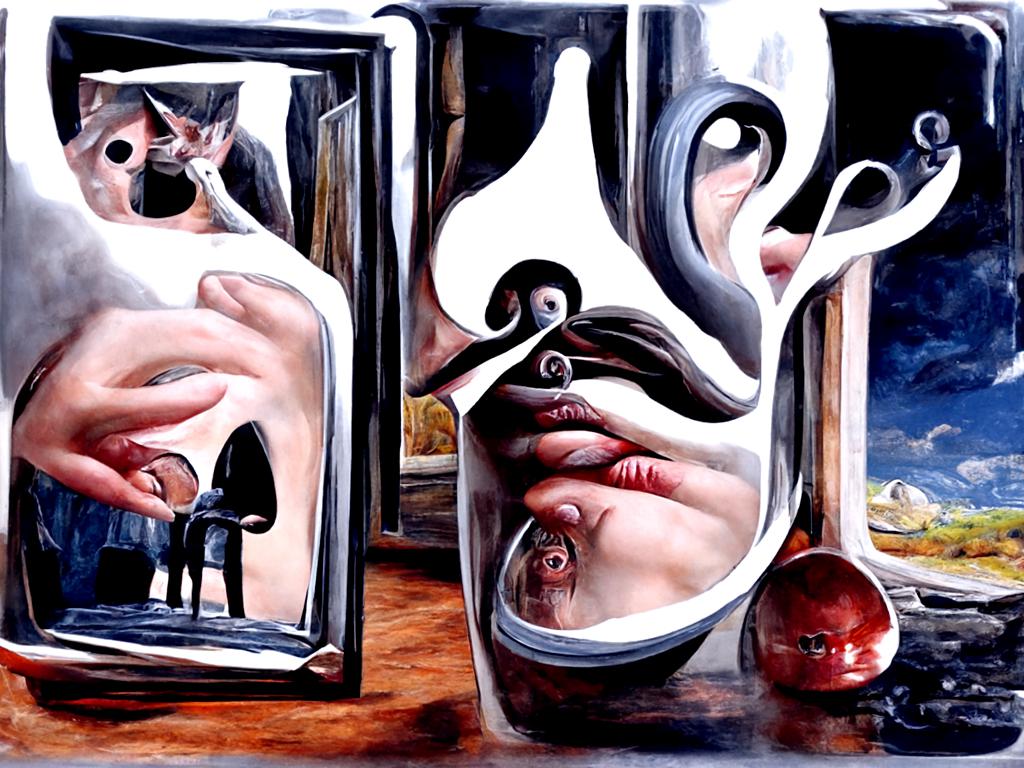Blog
Categories
Search
Last Add

Symbolic Motifs
In art and literature, mirrors often serve as symbolic motifs that provide a means for self-analysis. In visual arts, mirrors are employed as powerful visual metaphors for self-reflection and inner exploration. Artists use the mirror's reflective surface to invite viewers into a dialogue with their own identities, emotions, and experiences. The act of looking into the mirror depicted in a painting or sculpture becomes a catalyst for introspection, prompting the audience to question their own existence and embark on an inward journey. Through the mirror's reflection, artists convey the depth and multifaceted nature of the human experience, capturing moments of vulnerability, self-discovery, and personal transformation.
Mirrors as symbolic motifs also play a crucial role in literature. In literature, mirrors often act as symbolic portals, reflecting not only physical appearances but also the inner landscapes of characters' minds and souls. The act of looking into a mirror becomes an act of self-confrontation, where characters grapple with their own flaws, fears, and desires. The mirror becomes a metaphorical bridge between the external and internal worlds, unveiling the intricate layers of human emotions and psyche.
For example in "Jane Eyre" by Charlotte Bronte, mirrors symbolize the quest for truth and self-discovery. When the protagonist, Jane Eyre, encounters a mirror in Thornfield Hall, it becomes a tool for her to examine her identity and confront societal expectations. Through her interactions with the mirror, Jane explores her desires, challenges conventions, and finds the strength to assert her individuality. The mirrors in the novel represent the transformative power of self-reflection and the potential for personal growth and understanding.
Vanitas Art
Vanitas art, a genre that gained popularity during the 16th and 17th centuries, employs mirrors as potent symbols to convey profound themes of mortality, the fleeting nature of beauty, and the futility of material pursuits.
Within vanitas paintings, mirrors play a pivotal role in capturing the essence of these themes. They are often positioned within the composition, reflecting symbolic elements of mortality such as skulls, decaying objects, or extinguished candles. The mirror acts as a visual contrast between the illusion of beauty and the harsh reality of human transience.

The reflective surface of the mirror becomes a powerful metaphor for the impermanence of life. It emphasizes the fleeting nature of physical appearances and material possessions, serving as a reminder of the ephemeral nature of worldly existence. By reflecting symbols of mortality, the mirror prompts viewers to contemplate the passage of time, the inevitability of death, and the vanishing nature of youth and beauty.
The mirror in vanitas art encourages spiritual introspection amidst the transitory nature of life. It invites viewers to reflect upon the deeper meaning of existence beyond material pursuits. The mirror's reflection becomes a portal to self-examination, urging individuals to contemplate the purpose and significance of their lives, and to consider the importance of cultivating inner virtues and spiritual growth.
Moreover, the inclusion of mirrors in vanitas paintings also speaks to the vanity of human endeavors. By highlighting the emptiness of worldly possessions and the evanescent nature of physical beauty, mirrors serve as a sobering reminder of the limitations of material wealth and external appearances.

Surrealism
Surrealism, an influential artistic movement that emerged in the early 20th century, harnesses the symbolic power of mirrors to challenge conventional reality, explore the depths of the subconscious, and blur the boundaries between the conscious and the unconscious.
Within surrealist art, mirrors are utilized to distort and manipulate reality. They become tools for artists to disrupt spatial relationships, create dreamlike or otherworldly environments, and convey a sense of psychological tension and mystery. Mirrors in surrealism often reflect fragmented or distorted images, symbolizing the fragmented nature of the human psyche and the complexities of perception.
Mirrors in surrealism represent more than just reflective surfaces; they serve as portals to the subconscious mind. By distorting or fragmenting the reflected image, artists invite viewers to question their perception of reality. The mirror becomes a metaphorical gateway that unlocks the depths of the psyche, revealing hidden desires, fears and emotions.

Through their use in surrealism, mirrors symbolize the potential for self-discovery. They evoke a sense of introspection, inviting viewers to confront their own inner worlds and explore the mysteries of the human psyche. Mirrors in surrealist art challenge traditional notions of identity, reality, and perception, encouraging a reevaluation of the boundaries that confine our understanding.
Furthermore, mirrors in surrealism can evoke a sense of duality and ambiguity. They reflect alternate dimensions of reality, blurring the line between what is real and what is imagined. This characteristic of mirrors in surrealist art adds to the overall sense of intrigue and mystery, as viewers are compelled to question their own interpretations and confront the inherent contradictions within themselves.
Sum up
Mirrors in art and literature act as gateways to introspection and self-examination. They symbolize the quest for truth and self-discovery, reflecting the multifaceted nature of the human experience. In vanitas art, mirrors convey themes of mortality and the fleeting nature of beauty, urging viewers to reflect on the deeper meaning of existence. In surrealism, mirrors distort reality and represent portals to the subconscious, challenging conventional notions of identity and perception. Mirrors evoke a sense of duality and invite viewers to explore the mysteries of the human psyche.
Learn more about the symbolic meaning of mirrors in our next blog: https://studioart.ge/eng/blog_id/14



